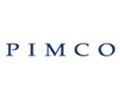PIMCO – Anti-Goldilocks: Key Takeaways From the Cyclical Outlook

Russia’s invasion of Ukraine, the sanctions response, and the gyrations in commodity markets cast an even thicker layer of uncertainty on what already was an uncertain economic and financial market outlook before the onset of this horrific war.
In our March 2022 Cyclical Outlook, “Anti-Goldilocks,” we discuss the wide range of possible scenarios and the potential for nonlinearities and abrupt regime changes in the economy and financial markets. This blog post summarizes our views.
Economic outlook: a radically uncertain environment
Despite the many unknowns, we draw five main conclusions regarding the cyclical six- to 12-month outlook that we think are most relevant for investors at this stage. (We share three conclusions here; read the full essay for the remainder.)
1) An “anti-Goldilocks” economy – The global economy and policymakers are confronted with a stagflationary supply shock that is negative for growth and will tend to push up inflation further. To be sure, this “anti-Goldilocks economy” – an economy that will be both too hot in terms of inflation and too cold in terms of growth – is not part of our tentative base case forecast, which still calls for above-trend growth and a gradual easing of inflation pressures from higher peaks in developed market economies overall. However, the risks of higher inflation and lower growth or even a recession have increased.
2) Nonlinear growth and inflation responses more likely – The outlook for both growth and inflation is clouded by potential nonlinearities related to already fragile initial conditions. Supply chain disruptions were already widespread due to COVID-19, weighing down output and pushing up costs and prices in many sectors. Russia’s war in Ukraine and the sanctions responses have led to further disruptions. Moreover, the recent COVID-related lockdowns in parts of China have the potential to create new bottlenecks in the global supply chain.
3) Asymmetric shock begets greater divergence – The war in Ukraine will likely lead to a greater dispersion of economic and inflation outcomes among countries and regions. Europe will be most affected, while the U.S. economy appears relatively isolated from the direct effects of the war in Ukraine. China and most other Asian economies have smaller direct trade linkages with Russia but will likely be negatively affected by higher energy prices and slower growth in Europe. In emerging markets (EM), exporters of commodities should benefit, though higher commodity prices will tend to increase already high inflation pressures in most EM economies.
Investment implications
Amid this difficult and uncertain environment, a key plank of our investment strategy will be to emphasize portfolio flexibility and portfolio liquidity to respond to events and potentially take advantage of opportunities.
Duration
We expect to target modest duration underweights given the current levels, the upside inflation risks, and the prospect for more central bank tightening.
We expect to de-emphasize curve positions, with the broad global tightening cycle now underway. We continue to see U.S. Treasury Inflation-Protected Securities (TIPS) as a reasonably priced way to mitigate upside inflation risks.
Credit
Credit positioning in portfolios should focus on resiliency, liquidity, and principal preservation for a wide array of scenarios. We will look to be underweight generic corporate credit, as we believe several areas of securitized products markets offer higher credit quality or more default-remote alternatives to corporate credit. Within corporate credit, we expect to continue to favor senior financials. In credit markets we will likely maintain a bias for the U.S. over Europe and EM.
Currencies and emerging markets
On currencies, in portfolios where these risk positions fit with our clients’ guidelines and expectations, we expect to overweight select G-10 and EM currencies versus the U.S. dollar and the euro with a focus on commodity beta and cheap valuations. We will keep these positons fairly small in the current uncertain environment. On EM, more generally, we expect to have limited exposure but continue to seek attractive opportunities in a difficult environment.
Commodities
Given the importance of energy to the production costs of other commodities, the impact on broad inflation due to the events in Ukraine has potential to lead to meaningfully higher prices as commodity buyers broadly look to reduce dependency on Russian exports. With commodity indices exhibiting positive carry at levels rarely seen, we believe commodities can also play a role in mitigating upside inflation risks.
Equities
We expect to be broadly neutral on overall equity beta risk in our asset allocation portfolios. We are now firmly in the late stage of the cycle, with underlying growth momentum still strong but increasingly vulnerable to downside risk. The current environment favors high quality and less cyclical companies, in our view. Our asset allocation portfolios – and our fixed income portfolios – will tend to emphasize keeping powder dry in an effort to take advantage of dislocations in equity markets as they arise.
Source: By Joachim Fels, Global Economic Advisor and Andrew Balls, CIO of Global Fixed Income at PIMCO

 Hellenic Shipping News Worldwide Hellenic Shipping News Worldwide, Online Daily Newspaper on Hellenic and International Shipping
Hellenic Shipping News Worldwide Hellenic Shipping News Worldwide, Online Daily Newspaper on Hellenic and International Shipping





















 PG-Software
PG-Software